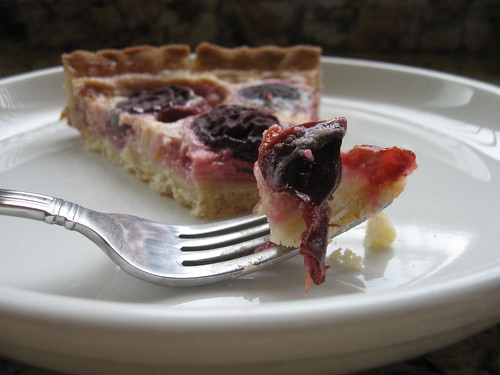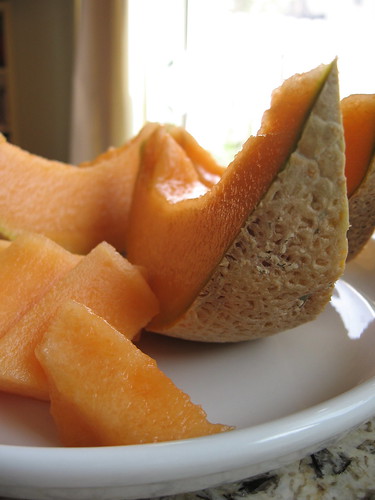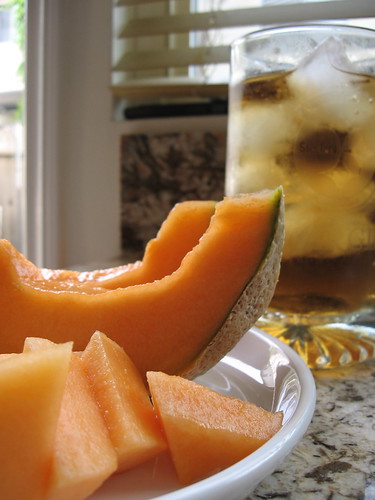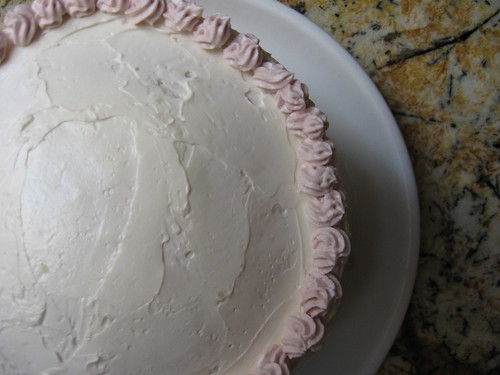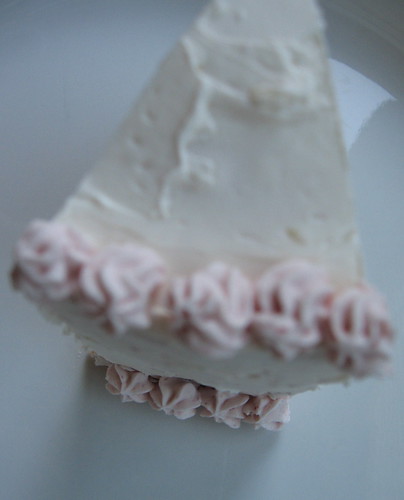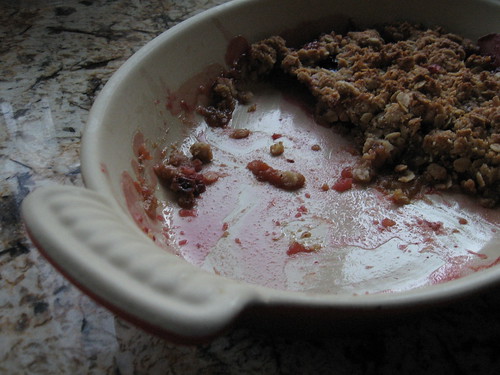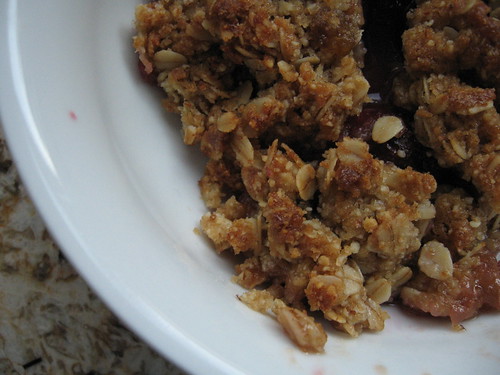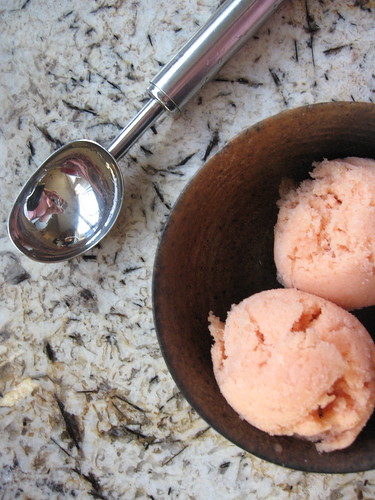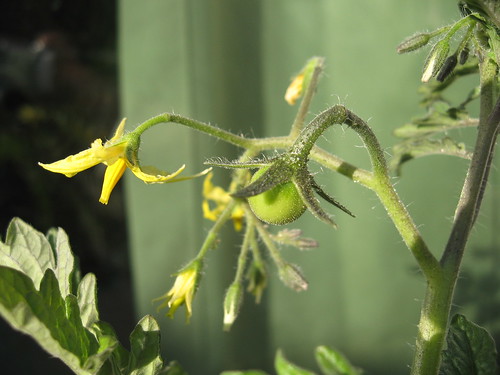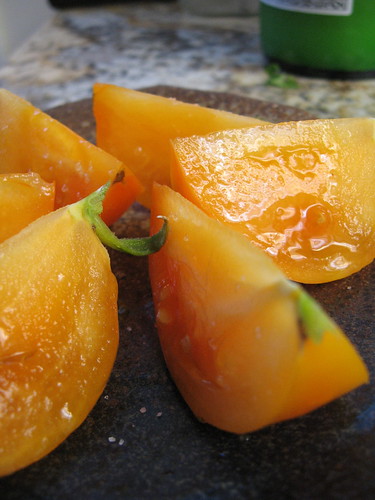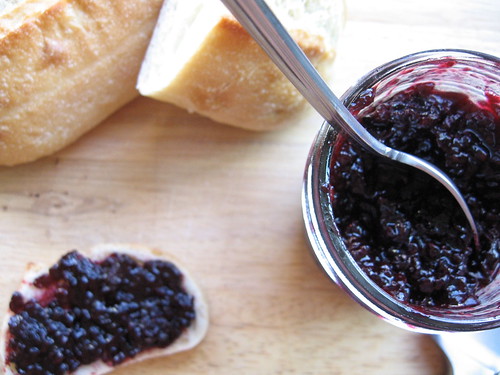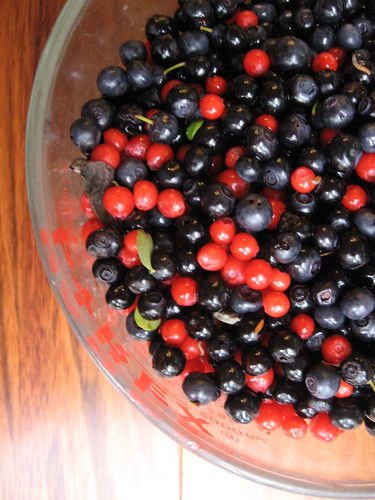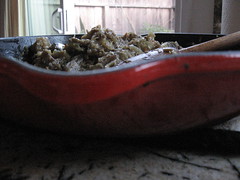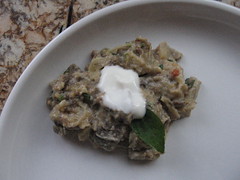I love braising, roasting, stewing, and making soup - it's a welcome temperature boost to our unheated home in the winter - but it doesn't seem appropriate for sultry summer days.

Indian food, along with Thai and Mexican cuisines, seems to have been designed for hot weather (and it was, wasn't it?). In this case, I was inspired by a delicious dish at our nearest Indian deli counter, but I wanted something spicier and chunkier. Waxy potatoes and bright red peppers are married with a base of onions, garlic, eye-watering ginger and mouth-searing chilies. Add a homemade curry powder, and you have a nutrient rich meal nearly bursting with flavor.
I like my Indian food to be tearinducing, leaving my lips tingling, my face red, and my eyes streaming. Mike can take anything I dish out, but he prefers a more, ahem, even-handed approach. The serranos from my garden are much hotter than what I buy in the store, and three with seeds made a good layer of heat.
Mise en place, when I take the time to prepare, makes my time in the kitchen smooth and simple. I find that even though I often dirty more dishes in the process, I have enough time to wash many of them while cooking. For Indian food, I highly recommend preparing things as much as possible - you don't want to burn your onions while you are measuring or grinding spices.
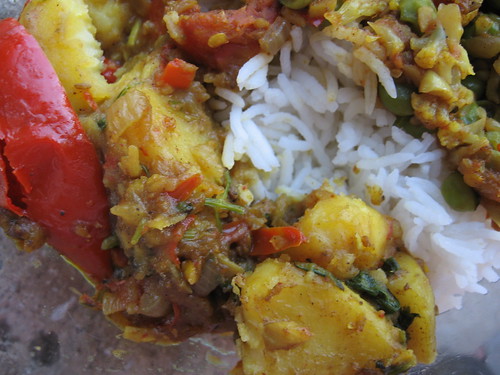
Aloo Simla Mirch (Curried Potatoes with Bell Peppers)
Like many Indian dishes, there are a lot of ingredients in a single dish; however, once you have the spices, it's easy to make a wide variety of dishes. Also, you can make a bigger batch of curry powder and store in a jar with your other spices - feel free to use it as you would a purchased curry powder.
For the curry powder (makes about ¼ cup; you can downsize if you won't use the extra):
5 teaspoons cumin seeds
4 teaspoons coriander seeds
6 whole cloves
12 whole peppercorns
1 teaspoon turmeric
1 teaspoon ground fenugreek
1 teaspoon ground ginger
For the dish:
1 lb waxy potatoes, such as white rose or Yukon gold, cut into ½-¾ pieces
1 lb red or green bell pepper, or a mix, seeded and cut into 1 inch chunks
½ large onion, diced (about 1 cup)
3 cloves garlic, peeled and minced
2-4 fresh serranos, seeded if desired, thinly sliced
1 ½ inch piece of fresh ginger, peeled and minced
3 tablespoons ghee, or 1 tablespoon butter and 2 of oil
1 tablespoon curry powder (above)
salt to taste
½ cup water
¼ teaspoon ground cayenne pepper (optional)
¼ teaspoon amchoor (dried mango powder; optional)
1 ½ tablespoon garam masala
For the curry powder, grind the whole spices in a spice mill, clean coffee grinder, or mortar until well mixed and in uniform pieces. Add the turmeric, fenugreek, and ginger and mix well. Set aside.
Heat ghee or butter/oil mixture in a large heavy pot on medium-high heat. Fry the peppers until just cooked and beginning to blacken, 3-5 minutes; set aside. Cook the onions until translucent; add ginger, garlic, and chilies. Cook about one minute, or until the chilies make you cough.
Add 1 tablespoon curry powder, reserving the rest for another use. Cook about one minute, stirring vigorously; add the potatoes and toss well to coat. Add about 1 teaspoon salt, water, and cayenne; bring to a boil. Lower the heat to medium-low, cover, and cook - stirring occasionally and adding water if needed - until the potatoes are just tender, 15-20 minutes.
Add peppers, amchoor powder and garam masala and stir well to mix. Add water if desired to achieve the desired consistency. Remove from heat, cover, and let sit 5 minutes.
Serve with basmati rice, naan or chapati, and yoghurt.
Serves 4-6

